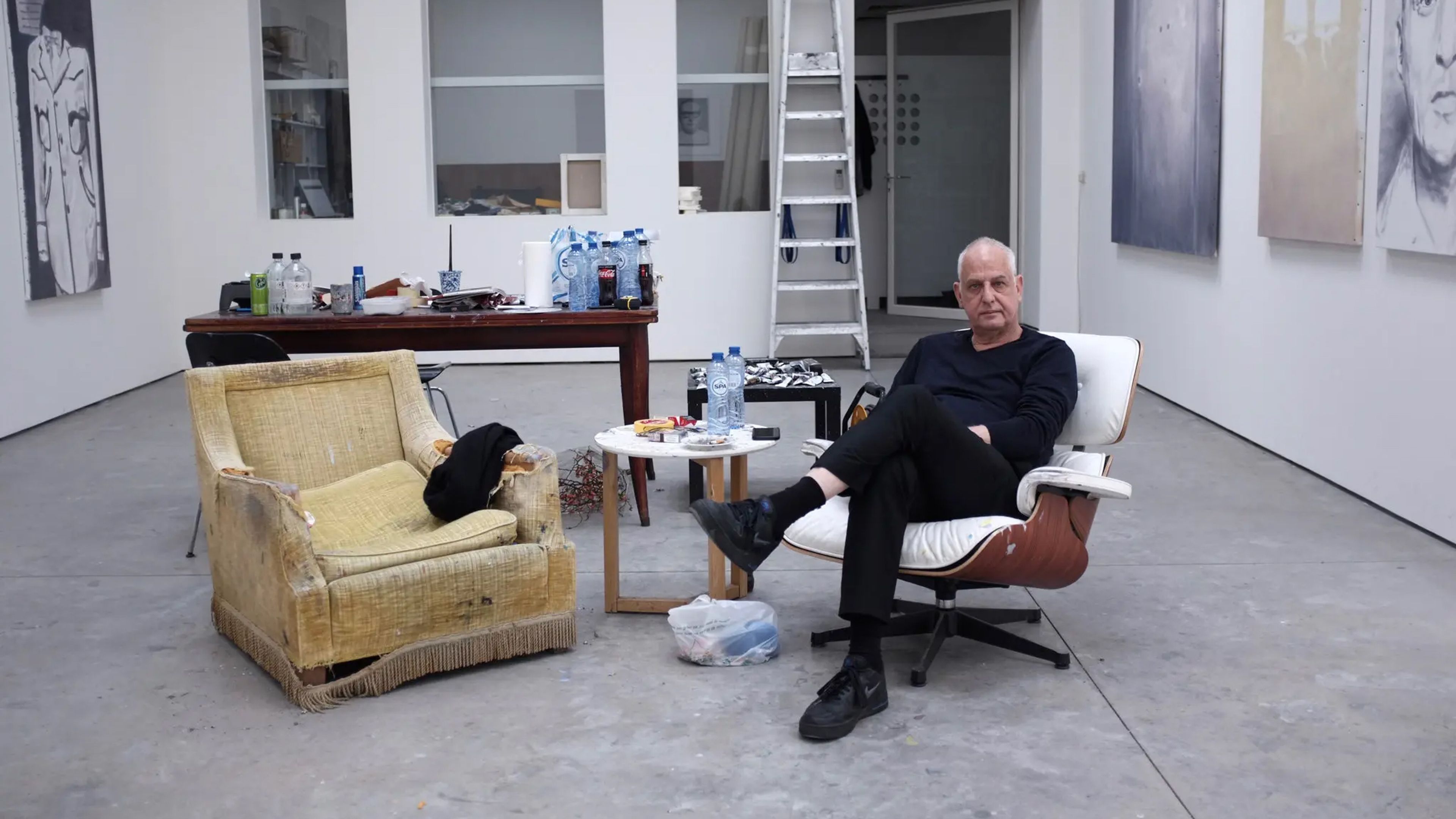The celebrated Belgian painter Luc Tuymans is best known for his uncanny renderings of existing images. Often working from photographs or film, Tuymans does not paint straight reproductions, but disquieting versions of characters and scenes from cultural memory — at once familiar and made strange by his signature muted tones. His work “The Secretary of State” (2005), which is in the Museum of Modern Art’s permanent collection, is a desaturated and tightly cropped close-up of Condoleezza Rice, squinting as though she has been caught with the sun in her eyes or in a moment of deliberation. Many of Tuymans’s notable early paintings concern the Holocaust, including “Gas Chamber” (1986), which he adapted from a watercolor he painted on-site at Dachau, and “Schwarzheide” (1986), based on a background detail of pine trees from a 1945 drawing of the titular concentration camp by survivor Alfred Kantor. Alongside the horrors of war and imperialism, everyday objects and popular iconography have recurred in Tuymans’s paintings throughout his career.
“I work from a reaction upon images that are already represented,” he told me over the phone in May, “because I believe nothing is really original. But then I have to make my take on it — and figuration in that sense becomes rather abstract, because everybody can have different connotations.” Indeed, though he is one of the artists often credited with bringing figurative painting back into fashion in the 1990s, the decade during which he rose to international prominence, Tuymans is less interested in representation than in evocation, or how his images are activated by both individual experience and the collective unconscious.
